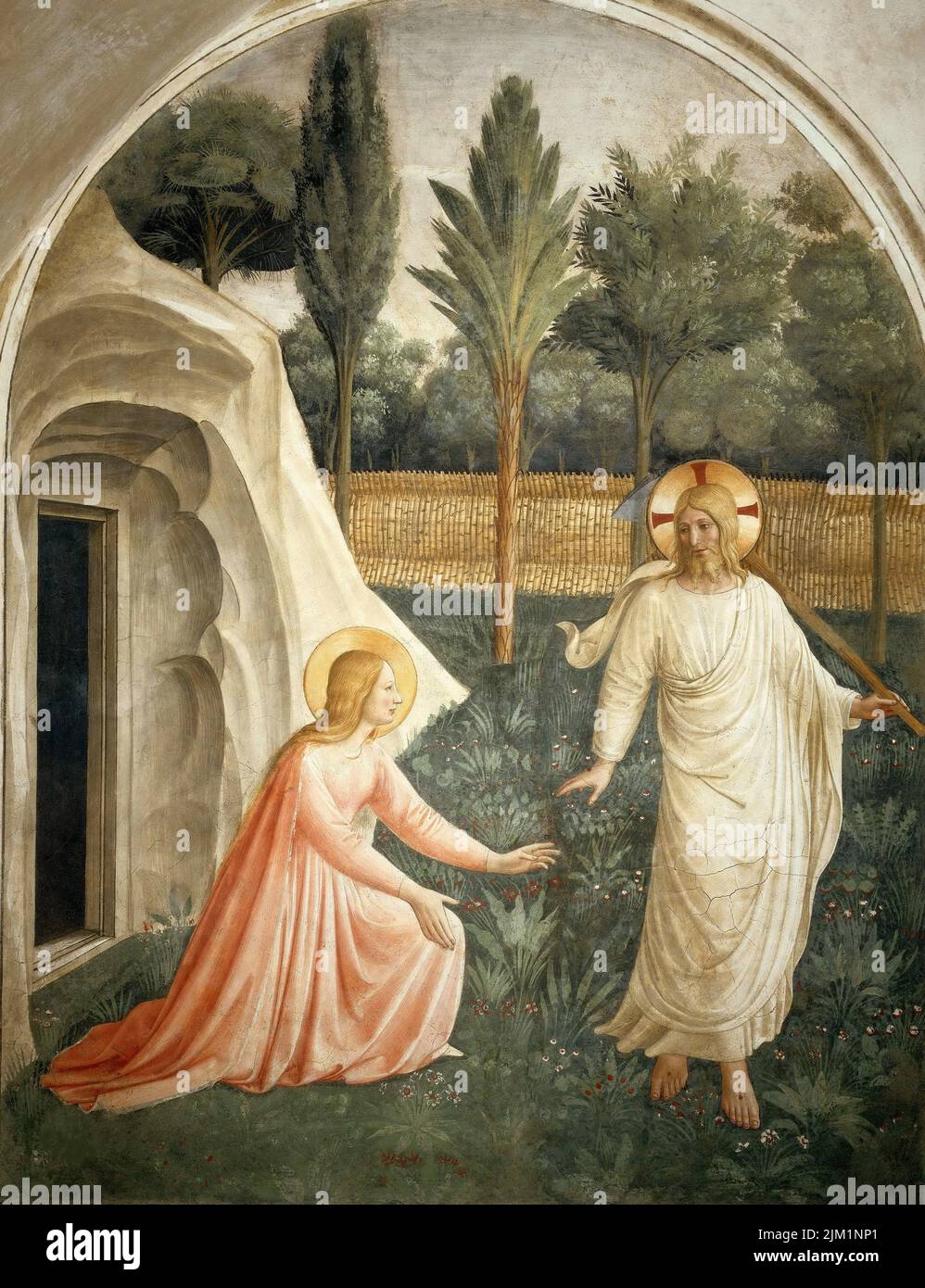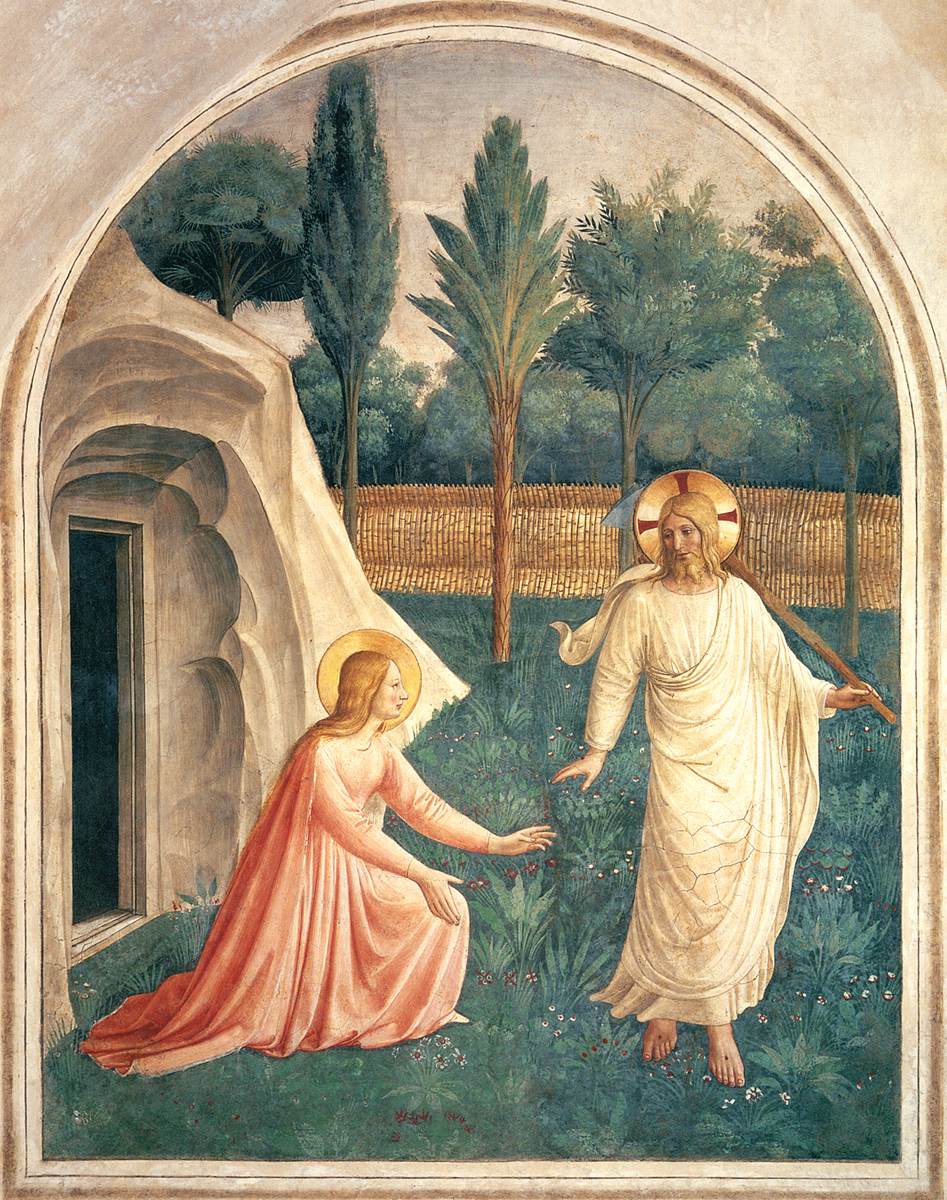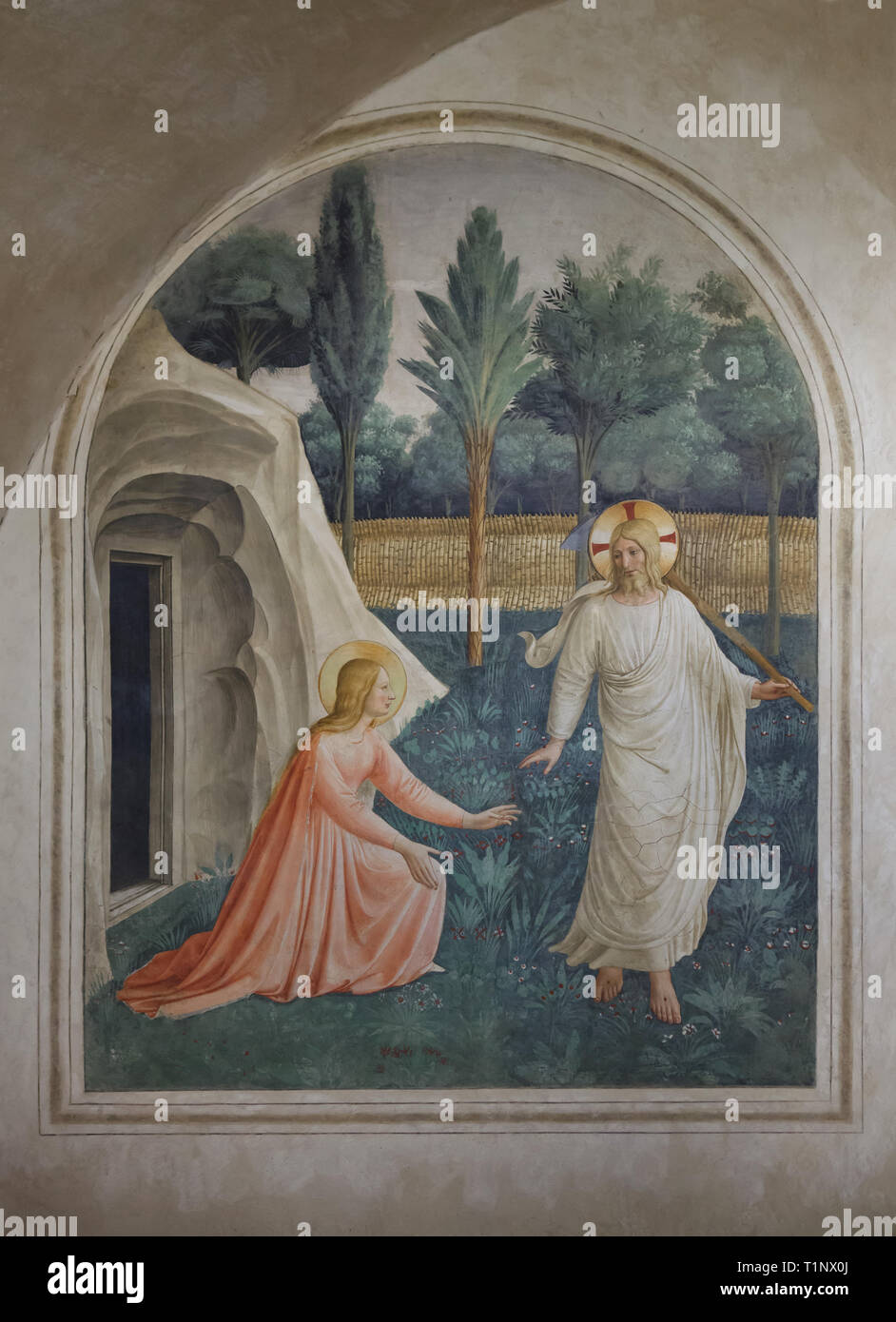
Fra Angelico’s Divine Emotion Cody Delistraty
Apr 1, 2020 Noli Me Tangere (c. 1442) by Fra Angelico. Fresco. Museum of San Marco, Florence. Source Wikimedia Commons The artist who made this painting was Fra Angelico, an Italian.

Noli me tangere beato angelico immagini e fotografie stock ad alta
Noli me tangere è uno degli affreschi di Beato Angelico che decorano il convento di San Marco a Firenze. Misura 180x146 cm e si tratta di una delle opere sicuramente autografe del maestro, risalente al 1438 - 1440 . Indice 1 Storia 2 Descrizione e stile 3 Bibliografia 4 Altri progetti 5 Collegamenti esterni Storia

Noli Me Tangere, 1440 1442 Fra Angelico
Nothing is known of his parents. He was baptized Guido. As a child, he was probably known after the Italian fashion as Guidolino ("Little Guido"). The earliest recorded document concerning Fra Angelico dates from 17 October 1417, when he joined a religious confraternity or guild at the Carmine Church, still under the name of Guido di Pietro.
Noli Me Tangere The Magdalene and the Resurrected Jesus, Fra Angelico
Beato Angelico: Noli me tangere, Museo di S. Marco, Firenze. José Rizal NOLI ME. José Rizal, Noli me tangere frontespizio, dediche, indice 4/17 . Monumento a José Rizal scoperto nel Piazzale Manila a Roma . il 19 giugno 2011 dall'Ambasciatrice delle Filippine presso la Santa Sede,.

Noli me tangere beato angelico immagini e fotografie stock ad alta
Plot Crisóstomo Ibarra, the mestizo son of the recently deceased Don Rafael Ibarra, is returning to San Diego town in Laguna after seven years of study in Europe. Kapitán Tiago, a family friend, invites him to a reunion party in Manila. At the party, Crisóstomo meets Padre Dámaso who was San Diego's parish priest when Crisóstomo left for Europe.

Noli me tangere, Beato Angelico (Giovanni da Fiesole)
Noli me tangere è un dipinto murale, eseguito tra il 1438 ed il 1440 circa, ad affresco, da Guido di Pietro, detto Beato Angelico ( 1395 ca. - 1455 ), ubicato nella cella 1 del dormitorio, al primo piano, nel Convento di San Marco, oggi sede del Museo Nazionale di San Marco di Firenze . Indice 1 Descrizione 1.1 Ambientazione 1.2 Soggetto

Fresco by Fra Angelico, in San Marco in Venice. Noli me tangere, Fra
On Facebook, the National Historical Commission of the Philippines (NHCP) announced the release of the facsimile (faithful reproduction) of the original Spanish manuscript of Rizal's famous novel. According to the Commission, the original Spanish manuscript as written by Rizal contained his own handwriting, his edits, corrections, and.

Noli me tangere, by Guido di Pietro (Piero) known as Beato Angelico
Noli me Tangere by Fra Angelico. Noli me Tangere (or Touch Me Not) depicts a significant iconographic scene from the bible in which Mary Magdalene sees Jesus walking outside of his tomb on the third day after his crucifixion. At first, she mistakes him for a gardener as he is carrying a garden tool. She then recognises him, tries to embrace him.

Noli me tangere, by Guido di Pietro (Piero) known as Beato Angelico
The painter has long been called `Beato Angelico' (the Blessed Angelico), but his beatification was not made official by the Vatican until 1984. Presentation in the Temple (left) 1440-41 (150 Kb); Fresco, 158 x 136 cm; Cell 10, Convent of San Marco, Florence Noli Me Tangere 1440-41 (190 Kb); Fresco, 180 x 146 cm; Cell 1, Convent of San Marco.

Beato Angelico Fra Angelico, Anima Christi, Orthodox Catholic, Noli Me
Sull'opera: "Noli me tangere" è un dipinto prevalentemente attribuito a Beato Angelico, appartenente al ciclo degli "Affreschi di San Marco", realizzato nel periodo tra il 1438 ed il 1446/50, misura 180 x 146 cm. ed è custodito nel Museo di San Marco a Firenze.

Pin en Fra Angelico
The Spanish colonization of the Philippines—which began in 1521—is the driving force of Noli Me Tangere, a novel that critiques the ways in which colonialism leads to corruption and abuse. The book itself predates the Philippine Revolution of 1896 by almost ten years, meaning that its rejection of Spanish oppression was groundbreaking and.

Sowing the stigmata A reading of Fra Angelico’s Noli me tangere by
File: Fra Angelico, Noli Me Tangere, 1440-41; Convent of San Marco, Florence (2).jpg

Beato Angelico, Maria Maddalena, Noli Me tangere, particolare, Museo di
Category. : Noli me tangere. From Wikimedia Commons, the free media repository. English: Noli me tangere, meaning "don't touch me", is the Latin version of words spoken, according to John 20:17, by Jesus (looking as gardener) to Mary Magdalene after his resurrection. In art history, it also describes the scenes representing John 20:17.

Albert Bierstadt Museum Noli Me Tangere Fra Angelico
Noli me tangere, Fra Angelico, St. Mark Museum, Florence BLESSED ANGELICO 1h docufilm by Elisabetta Valgiusti Watch clip - Vedi clip 3′ Read Press BLESSED ANGELICO, 1h docufilm Written, directed and produced by Elisabetta Valgiusti. A production by EWTN and Save the Monasteries https://www.savethemonasteries.org/

Beato Angelico, l’arte che mostra il Paradiso Vatican News
Noli me Tangere by Antonio da Correggio, c. 1525. Noli me tangere ('touch me not') is the Latin version of a phrase spoken, according to John 20:17, by Jesus to Mary Magdalene when she recognized him after his resurrection.The biblical scene has been portrayed in numerous works of Christian art from Late Antiquity to the present. The phrase has also been used in literature, and later in a.

Fra Angelico. Fresques de San Marco. Noli me tangere (144041)
noli me tangere Series title Object type fresco Genre religious art Depicted people Mary Magdalene Jesus Date 1450 / between 1439 and 1443 date QS:P,+1450-00-00T00:00:00Z/7,P1319,+1439-00-00T00:00:00Z/9,P1326,+1443-00-00T00:00:00Z/9